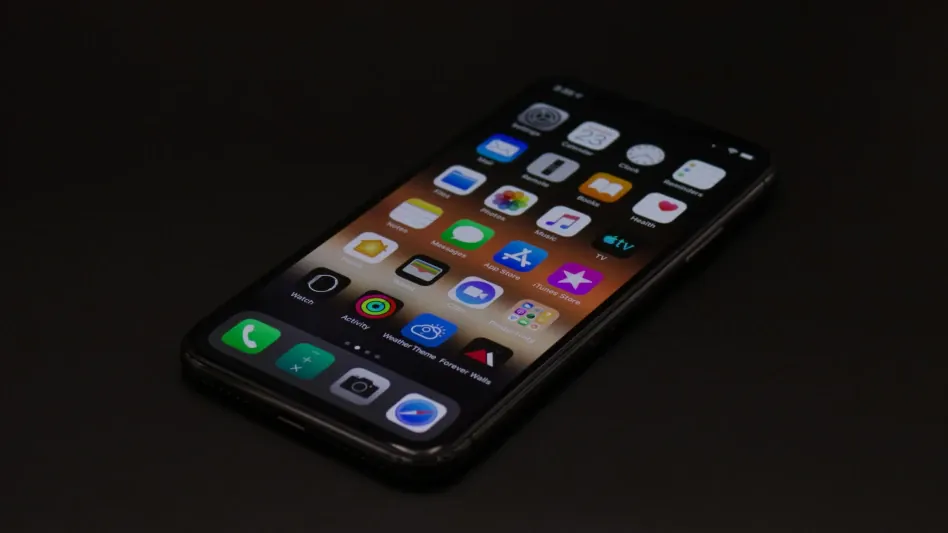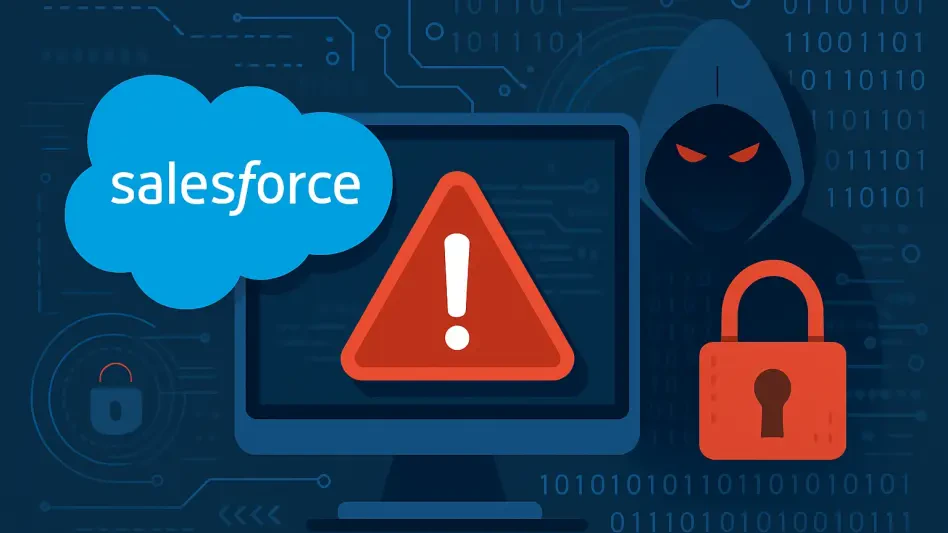An in-depth analysis of the Lookout Annual Threat Landscape Report for 2024 has revealed interesting insights into the mobile security landscape. Notably, it shows that iOS devices are subjected to twice as many phishing attacks as Android devices, a phenomenon that calls for increased scrutiny and proactive measures from both users and security professionals.
Disparity in Phishing Attack Exposure
iOS vs. Android: A Comparative Look
One of the remarkable findings from the Lookout report is the significant disparity in phishing attack exposure between iOS and Android devices. The data shows that 26% of iOS devices faced phishing attacks in 2024, compared to just 12% of Android devices. This alarming difference highlights a crucial security vulnerability in iOS devices. This difference can be partly attributed to the value proposition of iOS devices, which often makes them more appealing targets for cybercriminals. With a more affluent user base and higher resale value, phishing attacks on iOS devices can promise greater rewards.
Additionally, the closed ecosystem of iOS, which many users believe offers robust security, might paradoxically contribute to its vulnerability. The stringent control Apple exercises over its software and update rollouts can occasionally slow down the deployment of critical security patches. Rapid patching and updates are fundamental to thwarting phishing efforts, but delays can provide cybercriminals the window they need to exploit new vulnerabilities. As such, both Apple and iOS users need to remain vigilant and proactive in addressing security updates to curb the phishing risks.
Factors Contributing to the Vulnerability of iOS Devices
Experts suggest several reasons for this disparity, including the closed ecosystem of iOS, which, while beneficial in many ways, can sometimes delay the deployment of crucial security updates. The high market value and brand loyalty associated with Apple devices make them lucrative targets for cybercriminals. Furthermore, iOS users tend to exhibit greater trust in their device security, often neglecting to take necessary precautions against phishing attempts. This trust can lead to complacency, making iOS users more susceptible to sophisticated phishing tactics.
Another contributing factor is the wide range of third-party applications available on the iOS platform. Despite stringent vetting processes, malicious apps can still find their way onto the App Store, posing risks to users who unwittingly download them. Phishing attacks often exploit these apps to gain access to sensitive information stored on the device. Therefore, users must critically evaluate the apps they install and remain cautious about granting permissions that could open doors to phishing risks. Enhanced awareness and education regarding these threats are essential for iOS users to protect their devices effectively.
Regional Differences in Phishing Encounters
A Closer Look at Geographic Variations
The Lookout report also sheds light on regional differences in phishing attack rates. The Asia-Pacific (APAC) region sees the highest incidence of phishing attacks, followed by Europe, the Middle East, and Africa (EMEA), and then North America. These geographic variations suggest that cybercriminals may be tailoring their strategies to exploit regional vulnerabilities. In the APAC region, the rapid adoption of mobile technology coupled with varying degrees of cybersecurity awareness and preparedness contributes to the higher phishing rates.
For instance, countries with emerging markets might have a high volume of mobile users but inadequate cybersecurity infrastructure, making them prime targets for phishing attacks. In contrast, regions with well-established cybersecurity practices, such as North America, tend to demonstrate lower phishing encounter rates. However, complacency or over-reliance on existing security measures can still result in significant vulnerabilities. Therefore, businesses and individuals in these regions must consistently update and adapt their security protocols to address evolving threats.
Implications for Customized Security Measures
Understanding these geographic differences is essential for devising effective cybersecurity measures. Regions with higher rates of phishing attacks may need stricter and more tailored security protocols to protect their users. This insight is crucial for organizations operating in multiple regions, as they need to customize their security practices according to the varying threat levels. For instance, customized training programs tailored to specific regional threats can enhance user awareness and readiness to address phishing attempts.
Moreover, organizations might consider deploying region-specific threat intelligence tools to better anticipate and mitigate phishing risks. As cybercriminals continuously adapt their strategies, it’s imperative for security measures to evolve accordingly. Regular assessments, localized threat analysis, and coordinated efforts between cybersecurity agencies can significantly bolster defenses against phishing attacks. By adopting a dynamic and region-specific approach, organizations can safeguard their user base more effectively and mitigate the impact of phishing threats.
The Growing Threat of Mobile Malware
The Rise of Malicious Apps
In addition to phishing, mobile malware poses a significant threat. The Lookout report identifies 427,000 malicious apps targeting enterprise devices in 2024. These range from simple infostealers to sophisticated spyware, indicating the diverse and evolving nature of mobile threats. The proliferation of these malicious apps showcases the ingenuity and resourcefulness of cybercriminals who exploit various app functionalities to compromise sensitive information.
Malicious apps often masquerade as legitimate software, luring users into installing them and inadvertently providing access to their device’s data. Once installed, these apps can siphon off user credentials, confidential information, and even gain control over device functions. The wide variety of mobile malware, including trojan malware, surveillanceware, and adware, necessitates robust detection mechanisms and continuous monitoring to mitigate the associated risks.
Enhancing Mobile Malware Defenses
The report also highlights advancements in protection against mobile malware. Lookout has implemented defenses against 159 new mobile malware families while bolstering security against 247 known families. This continuous improvement in defense mechanisms is crucial in keeping up with evolving threats. Comprehensive detection protocols and rapid response strategies form the cornerstone of effective malware defense, ensuring that newly emerging threats are promptly neutralized.
Furthermore, advanced AI-driven threat intelligence systems play a pivotal role in identifying and countering mobile malware. By leveraging machine learning algorithms, these systems can detect behavioral anomalies indicative of malware activity, even before it becomes explicitly harmful. Regular updates and patches, coupled with user education, can significantly reduce the vulnerabilities posed by mobile malware. Organizations and individuals must prioritize these measures to safeguard their devices against the ever-growing network of malicious apps.
Cybersecurity Misconfigurations and Vulnerabilities
Common Device Misconfigurations
Several common misconfigurations contribute to mobile security vulnerabilities. These include outdated operating systems, out-of-date security patches, lack of device locks, and absence of encryption. Addressing these misconfigurations can significantly improve the overall security posture. For instance, outdated operating systems and security patches leave devices exposed to known vulnerabilities that cybercriminals can easily exploit.
Despite the apparent simplicity of rectifying such misconfigurations, many users fail to routinely update their devices or enable necessary security features. Regular updates and patches are instrumental in fortifying device defenses. Additionally, implementing device locks and encryption can prevent unauthorized access and protect sensitive data in the event of device theft or compromise. These fundamental security practices should be integral to any strategy aimed at securing mobile devices against potential threats.
Strategies to Mitigate Misconfigurations
Proper device management, regular updates, and user education are pivotal in mitigating these vulnerabilities. Organizations and individuals must prioritize these practices to enhance their mobile security infrastructure and protect against potential threats. Automated update systems, comprehensive user training programs, and stringent device management policies can address common misconfigurations effectively.
Furthermore, deploying sophisticated mobile endpoint detection and response (EDR) solutions can help monitor and manage device security. These systems can identify and resolve misconfigurations, ensuring that devices remain compliant with security standards. Encouraging a culture of cybersecurity awareness among users can also promote proactive measures, reducing the likelihood of security oversights. By integrating these strategies, devices can be better protected from the repercussions of misconfigurations.
The Modern Kill Chain and the Importance of Mobile Security
Mobile Devices as Gateways
Modern threat actors are increasingly using mobile devices as initial points of compromise in a strategy known as the Modern Kill Chain. By targeting mobile devices, they can steal credentials and infiltrate enterprise clouds, positioning mobile security as a crucial component of a comprehensive cybersecurity strategy. This paradigm shift underscores the need for organizations to recognize the role of mobile devices as gateways to broader system vulnerabilities.
Mobile devices, given their ubiquitous use and connectivity, provide an ideal entry point for cybercriminals to execute the Modern Kill Chain strategy. Credential theft via mobile phishing can lead to unauthorized access to enterprise systems, resulting in severe data breaches. To counteract this, companies must adopt stringent mobile security measures, considering all aspects of data protection from device endpoints to cloud storage solutions. The integration of mobile security within broader cybersecurity frameworks can significantly enhance overall security posture.
Leveraging Advanced Threat Intelligence
An in-depth analysis of the Lookout Annual Threat Landscape Report for 2024 has unveiled several intriguing insights into the current state of mobile security. A particularly significant finding from the report highlights that iOS devices are targeted by phishing attacks at twice the rate of Android devices. This data suggests a pressing need for heightened vigilance and preventative measures from both users and IT security professionals. As phishing continues to be one of the most common and effective attack vectors, the disparate impact on iOS users underscores the necessity for improved user education, enhanced security protocols, and possibly more robust phishing detection technologies. Additionally, the report emphasizes the onus on technology companies to strengthen their security features, raise user awareness about potential threats, and encourage regular software updates to mitigate risks. Understanding these dynamics is crucial for developing comprehensive mobile security strategies that safeguard user data against increasingly sophisticated cyber threats.








